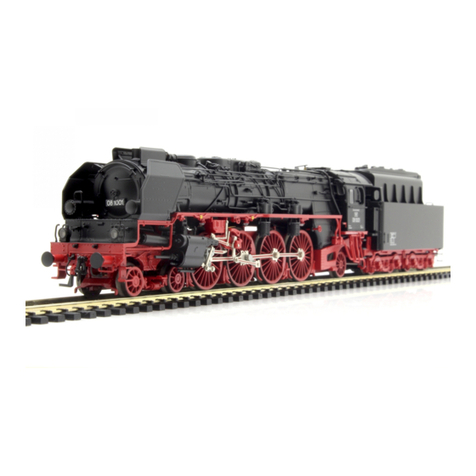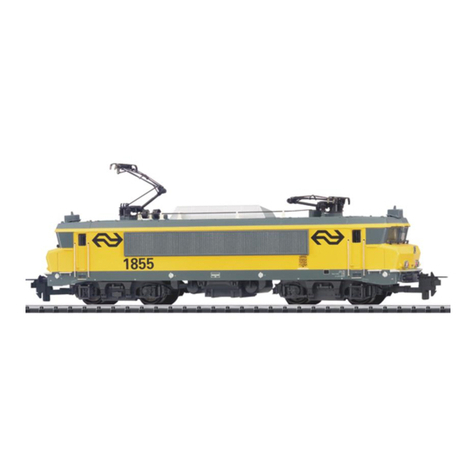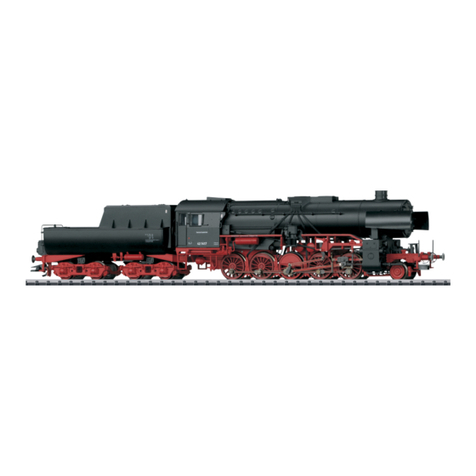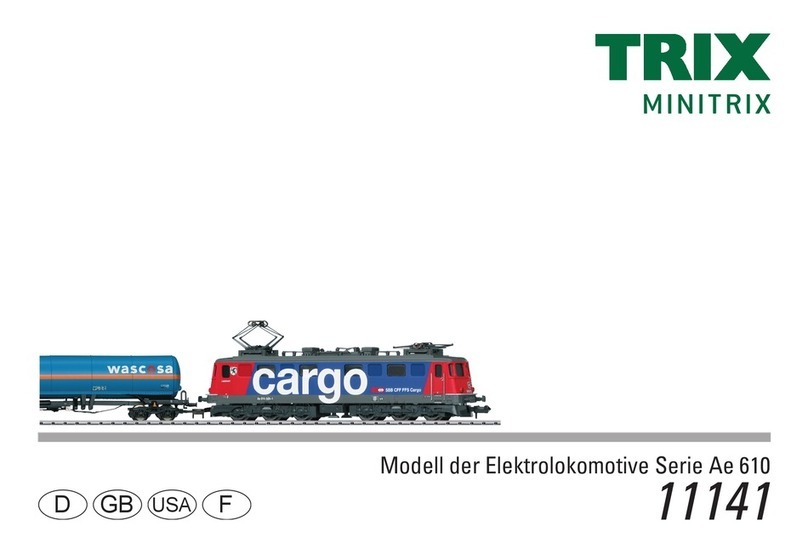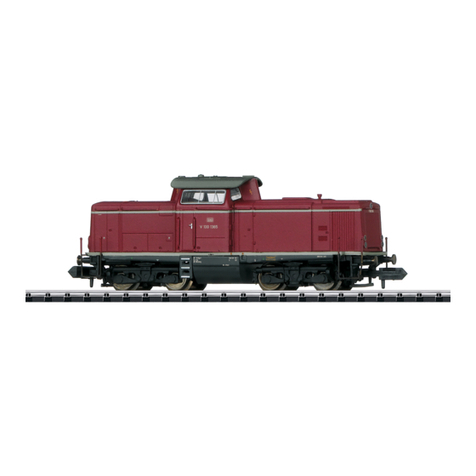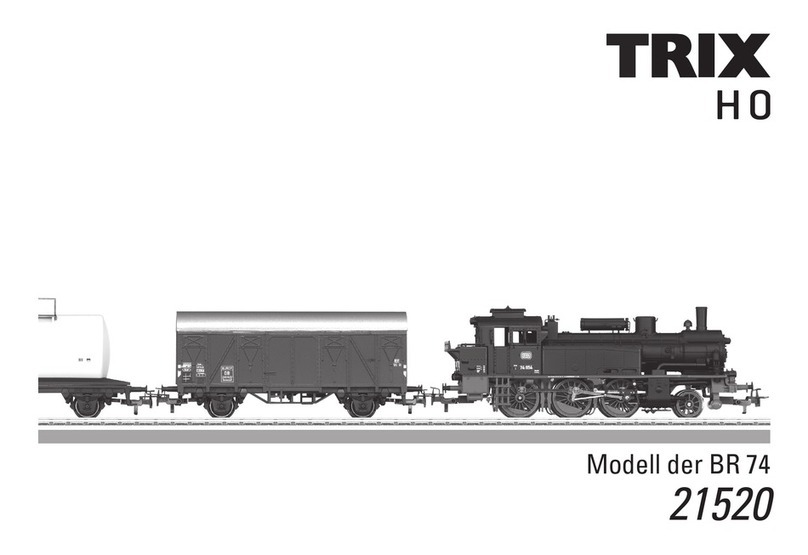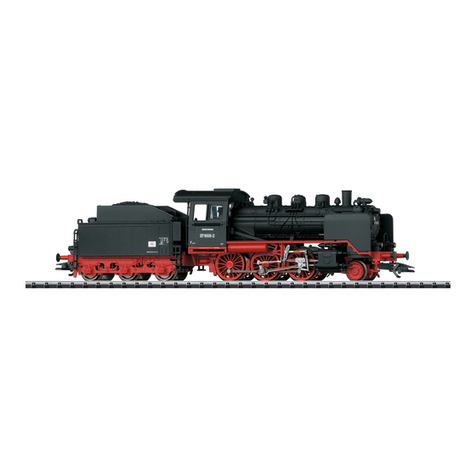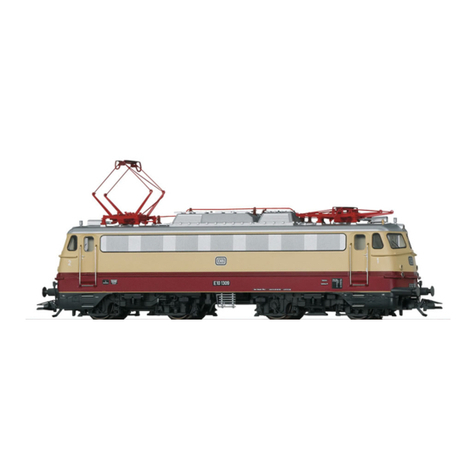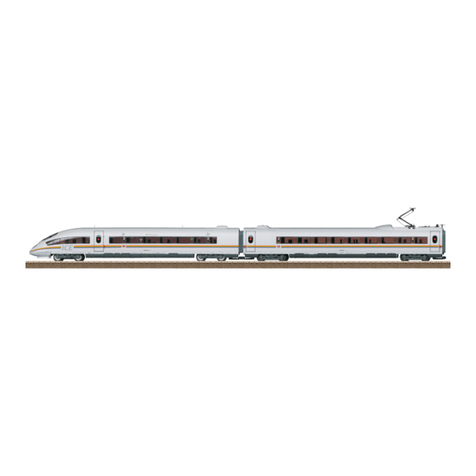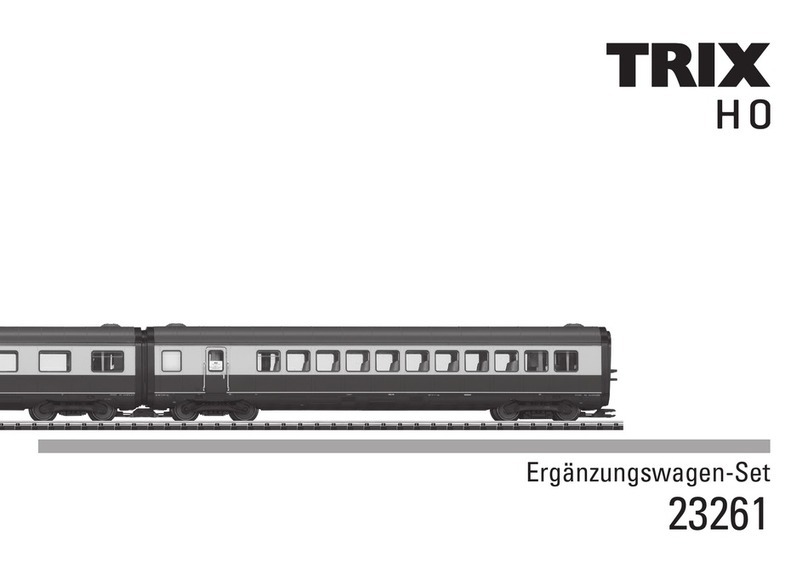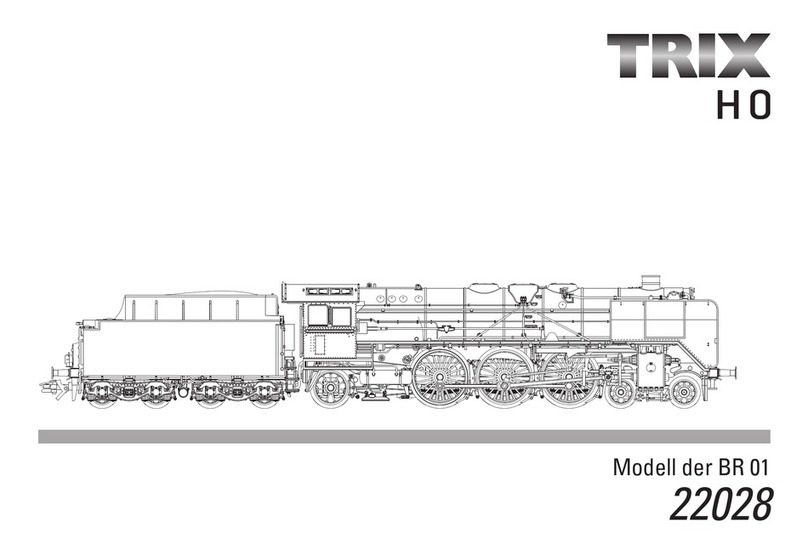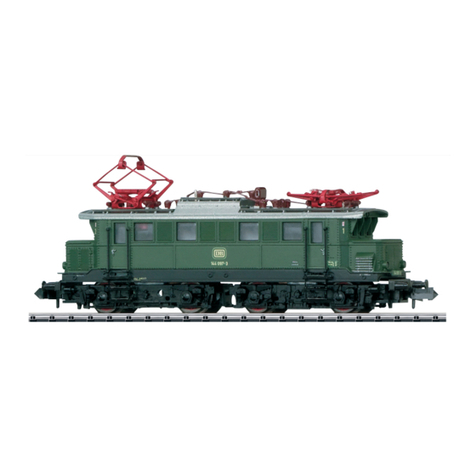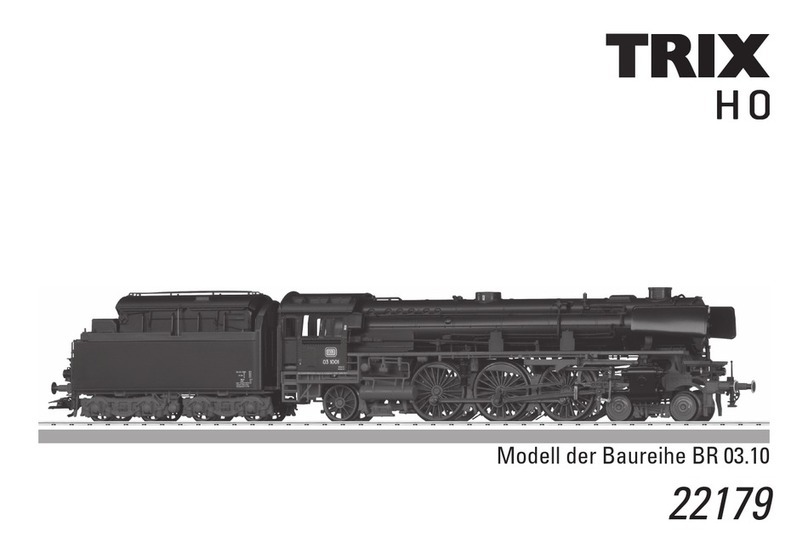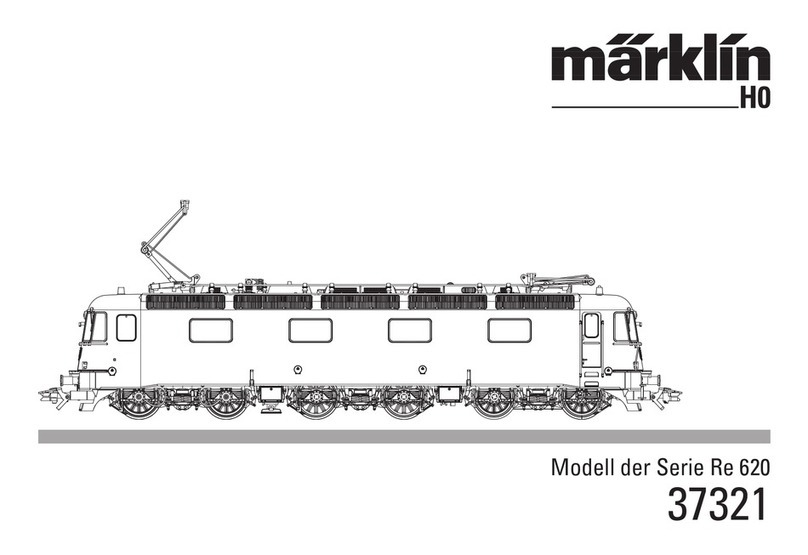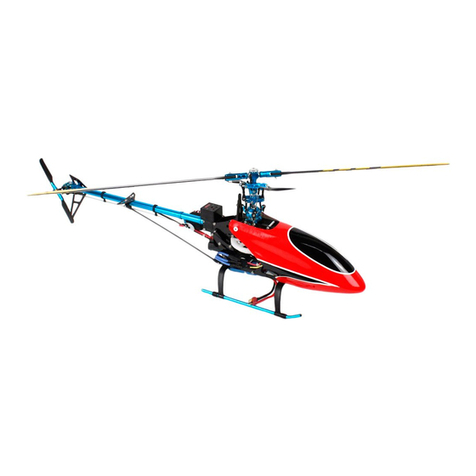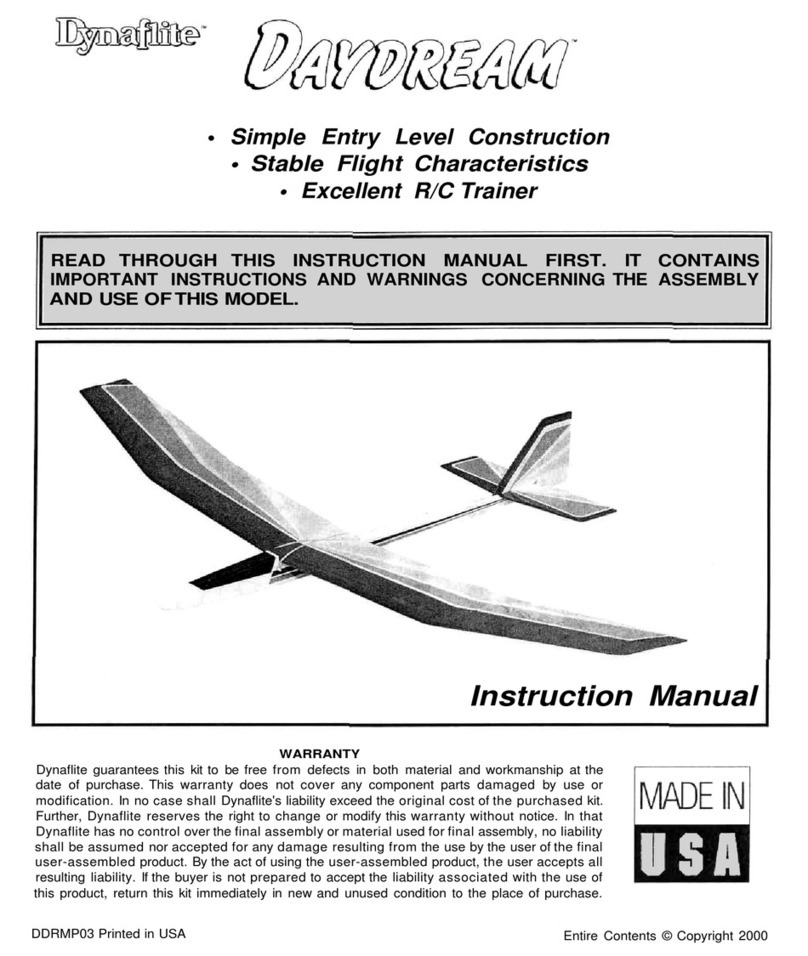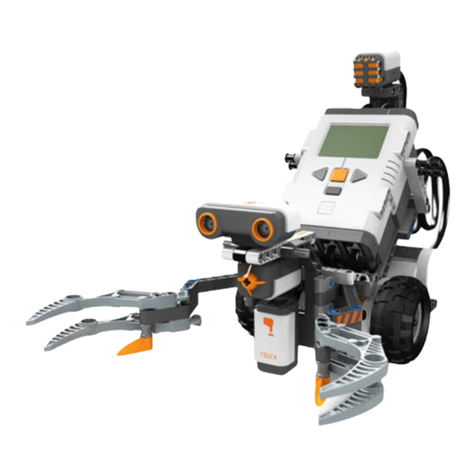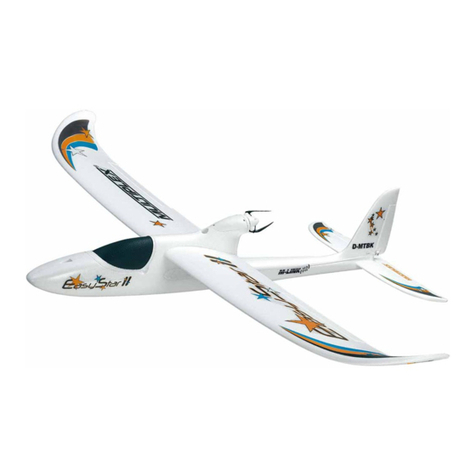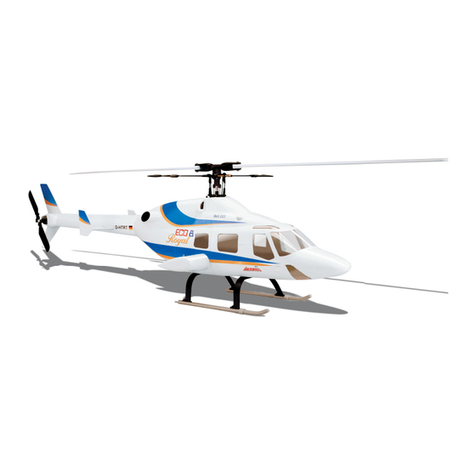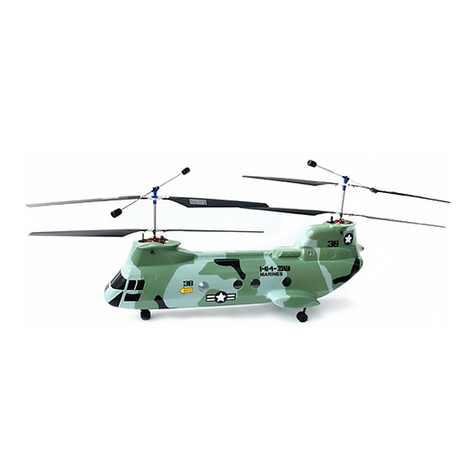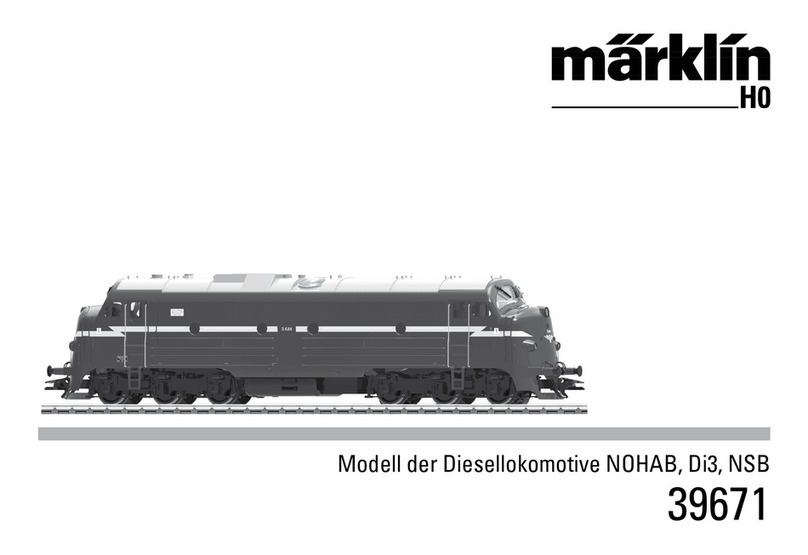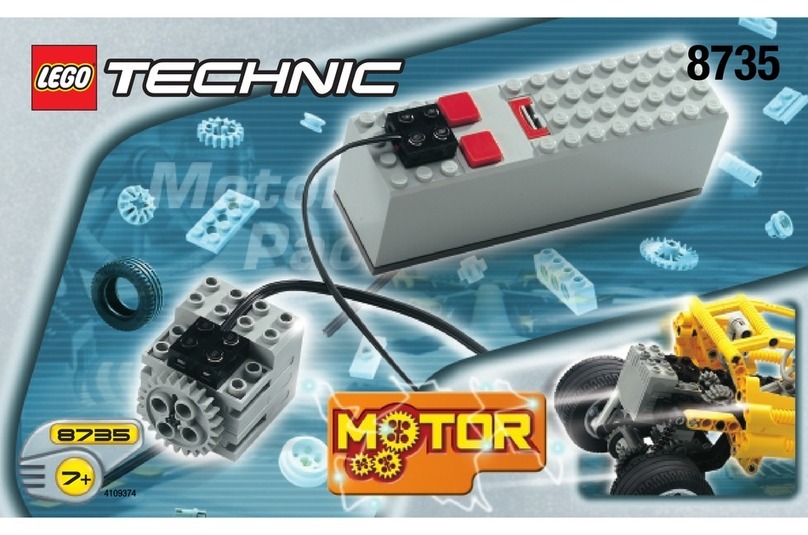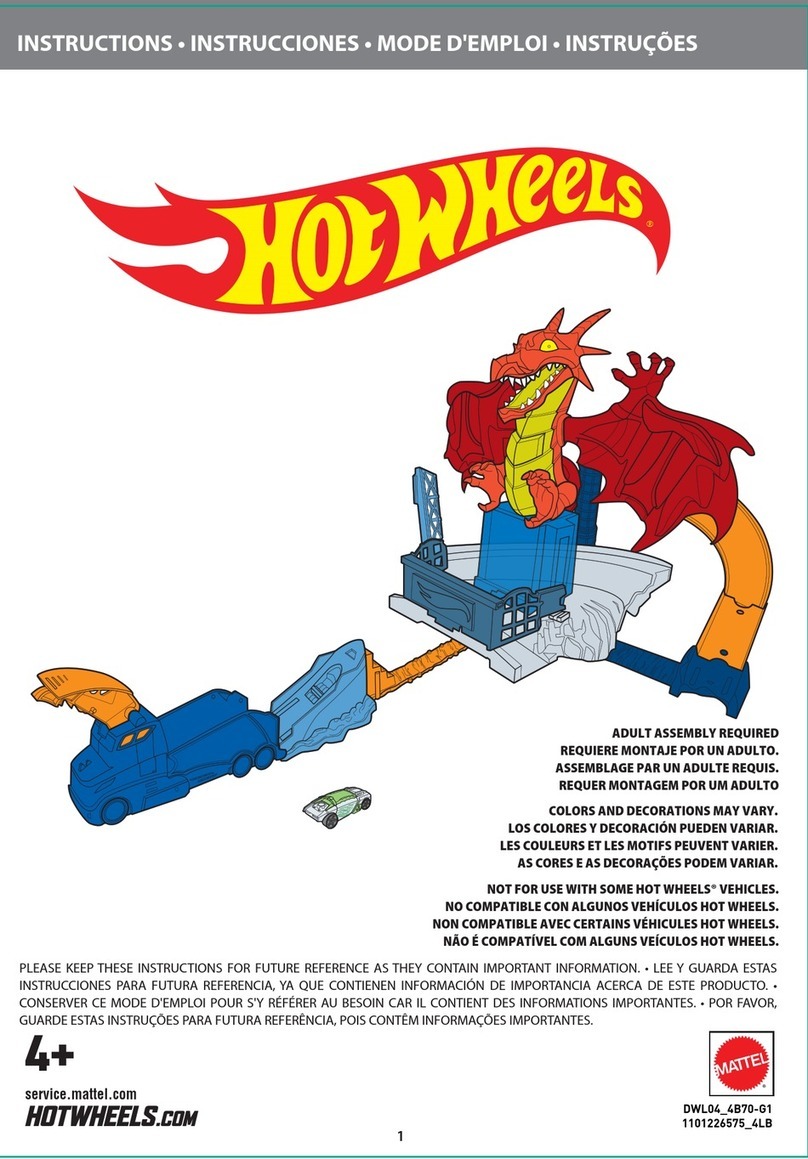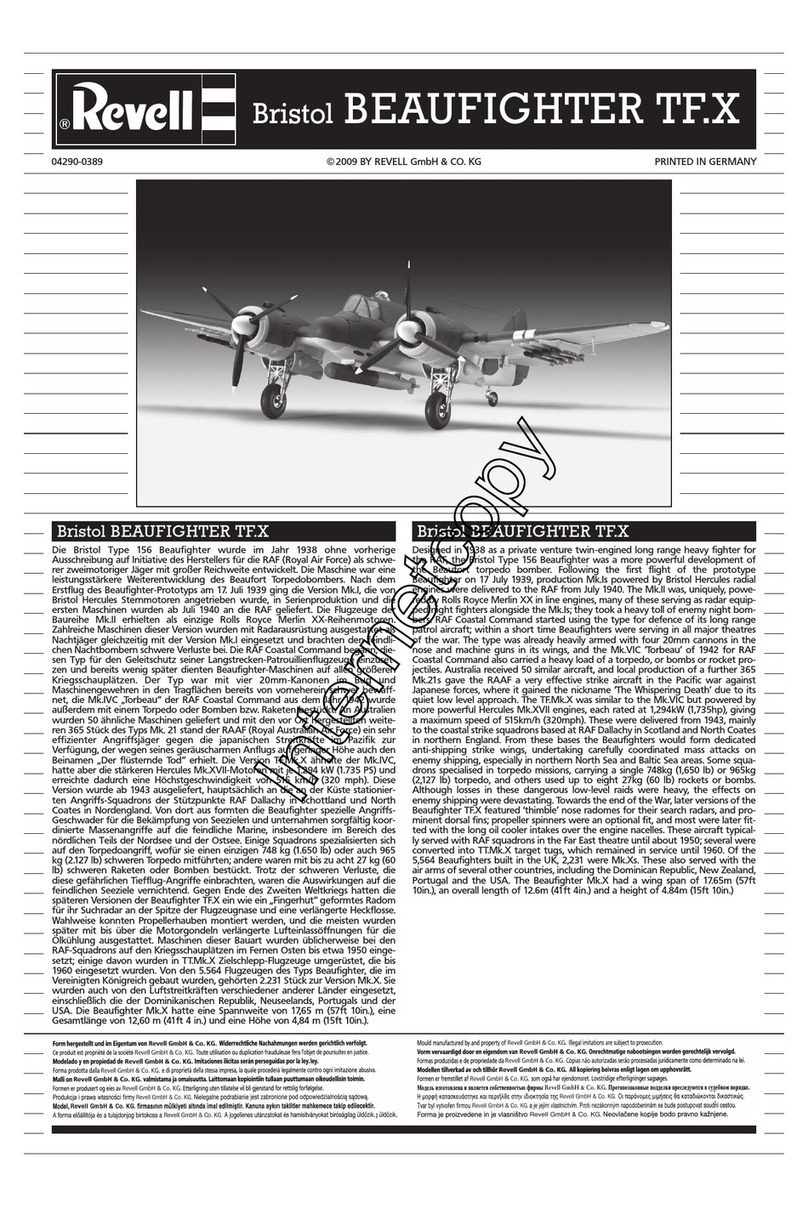
5
Informations concernant la locomotive réelle
Pour remorquer les lourds trains de minerais de Gällivare et
Kiruna, les chemins de fer suédois (SJ) décidèrent en février
1952 de commander six doubles locomotives de la nouvelle
série Dm, qui se basait sur la série Da à l’époque en construc-
tion. Tout comme la DA, la Dm fut équipée d’un système de
transmission par bielles alors déjà bien dépassé. Chaque
élément de la locomotive était entraîné par deux moteurs
monophasés à excitation série qui agissaient sur l’arbre
secondaire de renvoi entre les quatre essieux moteurs via un
engrenage. Ces quatre essieux moteurs étaient reliés à l’arbre
secondaire de renvoi via des bielles d’accouplement. Pour un
meilleur guidage latéral du boudin, un essieu porteur situé à
l’extrémité de la cabine de conduite venait compléter le tout. En
raison du petit nombre d’unités à acquérir, les chemins de fer
norvégiens (NSB) durent se résigner à l’utilisation du système
de transmission par bielles et se rallier quelques semaines
plus tard à la commande des SJ pour la série Dm avec trois
autres doubles locomotives. Les machines désignées par les
NSB comme série El 12 furent livrées au printemps 1954 sous
les numéros 2113 à 2118. En juin 1957, la El 12 2119/2120 repré-
sentait la quatrième double locomotive. Entre 1965 et 1968, les
NSB firent transformer leurs El 12 de manière à ce que les huit
éléments puissent être assemblés librement en locomotives
à trois éléments. A cet effet, les éléments furent munis entre
autres de solides traverses porte-tampons aux extrémités des
attelages courts. A partir de 1968, les NSB disposaient donc de
deux El 12 à trois éléments et de deux éléments de réserve. A
partir de 1984, les El 12 devinrent superflues et ne furent plus
gardées que comme locomotives de réserve. Leur réforme eut
lieu entre 1987 et 1992. La El 12 2113/2115 et la 2119/2120 furent
conservées comme locomotives musée.
Informatie van het voorbeeld
Voor het trekken van de zware ertstreinen uit Gällivare en
Kiruna besloten de Zweedse staatsspoorwegen (SJ) in fe-
bruari 1952 om zes dubbellocomotieven van de nieuwe serie
Dm te bestellen. Deze waren gebaseerd op de dat moment in
productie zijnde locs van de serie Da. Evenals de Da kregen
ook de Dm een, destijds technisch al lang achterhaalde, drijf-
stangenaandrijving. Elk locdeel werd door twee enkelfase
-seriemotoren aangedreven welke via een overbrenging
het blinde wiel tussen de vier drijfwielen aandreven. Deze
waren via koppelstangen verbonden met het aangedreven
blindwiel. Een loopwielas onder het eind van de cabine voor
een betere spoorvoering complementeerde het geheel. Van-
wege het te geringe aantal aan te schaffen locs moesten de
Noorse staatsspoorwegen (NSB) door de zure appel van de
drijfstangenaandrijving heen bijten om zich een paar weken
later met een bestelling van drie dubbellocs aan te sluiten
bij de bestelling van de SJ. De bij de NSB als serie El 12
gekenmerkte machines werden in het voorjaar van 1954 met
de nummers 2113-2118 uitgeleverd. Met de El 12 2119/2120
volgende in juni een vierde dubbelloc. Tussen 1965 en 1968
lieten de NSB hun El 12 dusdanig ombouwen dat er acht en-
kel locomotieven ontstonden die in willekeurige volgorde als
drievoudige tractie samengesteld konden worden. Hiervoor
kregen ze o.a. een stabiele bufferbalk aan de kortgekoppelde
zijde. Vanaf 1968 had de NSB op deze wijze de beschikking
over twee driedelige El 12 en twee reserve delen. Na 1984
werden de El 12 overbodig en alleen nog als reserve locs
aangehouden. Tussen 1987 en 1992 volgde dan ook de bui-
tendienststelling. De El 12 2113/2115 en de 2119/2120 beleven
als museumloc behouden.


